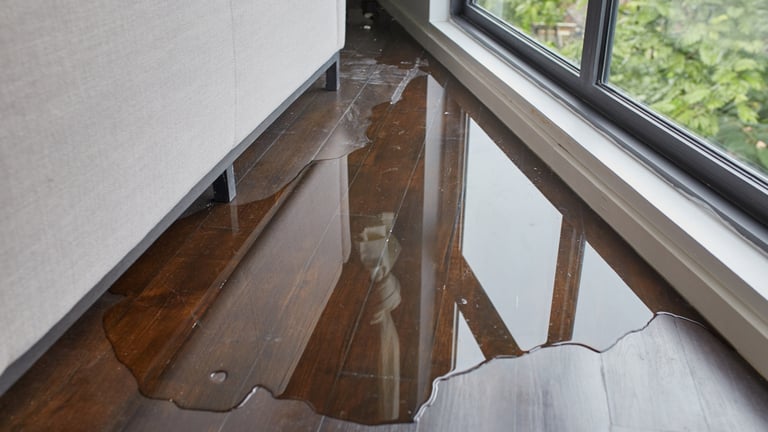6 Water Damage Reconstruction Do's and Don'ts.
6 Water Damage Reconstruction Do's and Don'ts.
Blog Article
Just about everyone will have their private theory on the subject of Ways to Reduce The Risk Of Fire And Water Damage.

Water provides life, yet water invasion on some parts where it's not expected to be can result in damages and inconvenience. If the water permeates right into your structure, it can peel off away the surface as well as deteriorate the material's structure. Mold and also mold also flourish in a wet setting, which can be harmful for your and also your family's health. On top of that, houses with water damages scent musty and old.
Water can come from numerous resources like hurricanes, floodings, ruptured pipelines, leakages, and also sewage system concerns. If you have water damage, it's better to have a working understanding of safety precautions. Right here are a few guidelines on exactly how to handle water damage.
Do Prioritize Residence Insurance Policy Coverage
Seasonal water damage can originate from floodings, seasonal rainfalls, as well as wind. There is likewise an incident of a sudden flood, whether it came from a defective pipe that all of a sudden bursts into your home. To shield your home, obtain residence insurance coverage that covers both acts of God such as natural calamities, as well as emergencies like busted plumbing.
Don't Forget to Turn Off Energies
When catastrophe strikes and you remain in a flood-prone location, shut off the main electrical circuit. Switching off the power stops
electrical shocks when water comes in as water acts as a conductor. Don't neglect to shut off the main water line shutoff as a way to avoid more damages.
Keep your furnishings steady as they can relocate around as well as cause added damage if the floodwaters are obtaining high.
Do Remain Proactive and Heed Climate Notifies
If you live in a location plagued by floods, remain ready and also proactive at all times. Listen to the news as well as emptying cautions if you live near a body of water like a lake, creek, or river .
Don't Overlook the Roofing System
Your contractor must take care of the faulty seamless gutters or any kind of other signs of damages or weakening. An assessment will protect against water from flowing down your wall surfaces as well as soaking your ceiling.
Do Pay Attention to Tiny Leaks
A ruptured pipe does not occur in a vacuum or over night. There are red flags that can attract your attention as well as indicate to you some damaged pipes in your house. Indications of warnings in your pipes consist of bubbling paint, peeling off wallpaper, water streaks, water discolorations, or dripping noises behind the walls. There are indications that the pipe will break. If you see these indications, don't wait on an escalation. Repair and evaluate your plumbing repaired prior to it results in large damage to your home, funds, as well as an individual nightmare.
Do Not Panic in Case of a Burst Pipeline
Timing is crucial when it comes to water damages. If a pipe bursts in your residence, quickly shut off your major water shutoff to cut off the source and also stop more damage. Call a reliable water damage restoration professional for help.
Water provides life, but water breach on some parts where it's not supposed to be can result in damages as well as hassle. In addition, homes with water damages odor old and musty.
Seasonal water damage can come from floodings, seasonal rains, and also wind. Indicators of red flags in your pipes consist of bubbling paint, peeling wallpaper, water touches, water spots, or dripping audios behind the walls. If a pipeline bursts in your home, quickly shut off your major water valve to reduce off the source and protect against more damages.
Some Do's & Don't When Dealing with a Water Damage
DO:
Make sure the water source has been eliminated. Contact a plumber if needed. Turn off circuit breakers supplying electricity to wet areas and unplug any electronics that are on wet carpet or surfaces Remove small furniture items Remove as much excess water as possible by mopping or blotting; Use WHITE towels to blot wet carpeting Wipe water from wooden furniture after removing anything on it Remove and prop up wet upholstery cushions for even drying (check for any bleeding) Pin up curtains or furniture skirts if needed Place aluminum foil, saucers or wood blocks between furniture legs and wet carpet Turn on air conditioning for maximum drying in winter and open windows in the summer Open any drawers and cabinets affected for complete drying but do not force them open Remove any valuable art objects or paintings to a safe, dry place Open any suitcases or luggage that may have been affected to dry, preferably in sunlight Hang any fur or leather goods to dry at room temperature Punch small holes in sagging ceilings to relieve trapped water (don't forget to place pans beneath!); however, if the ceiling is sagging extremely low, stay out of the room and we'll take care of it DO NOT:
Leave wet fabrics in place; dry them as soon as possible Leave books, magazines or any other colored items on wet carpets or floor Use your household vacuum to remove water Use TV's or other electronics/appliances while standing on wet carpets or floors; especially not on wet concrete floors Turn on ceiling fixtures if the ceiling is wet Turn your heat up, unless instructed otherwise

As a serious person who reads about Reducing Your Risk Of Water And Fire Damage At Home, I figured sharing that excerpt was a good thing. Appreciated our article? Please share it. Help another person find it. Thanks for taking the time to read it.
Report this page